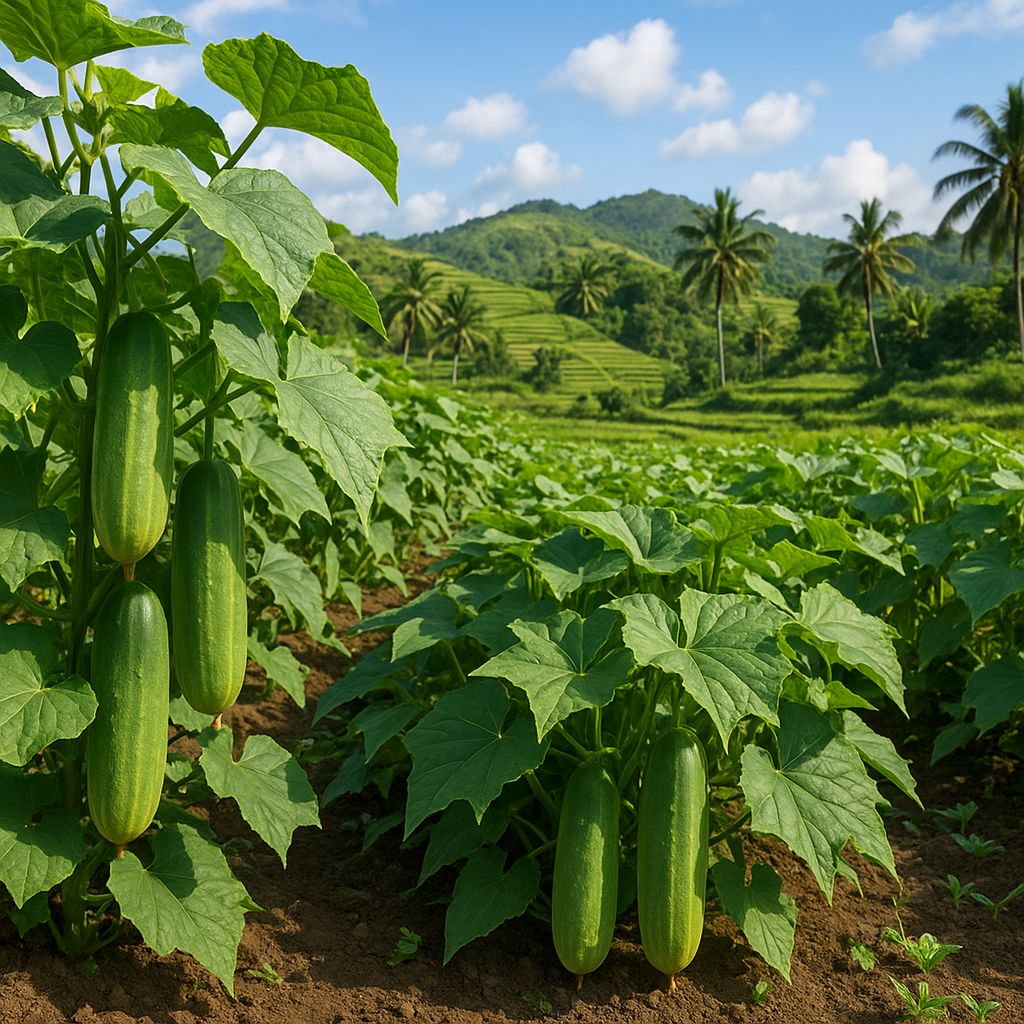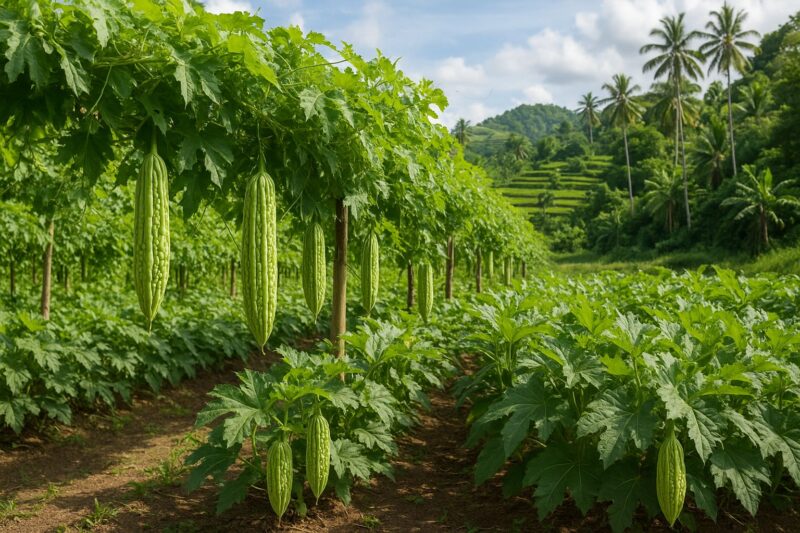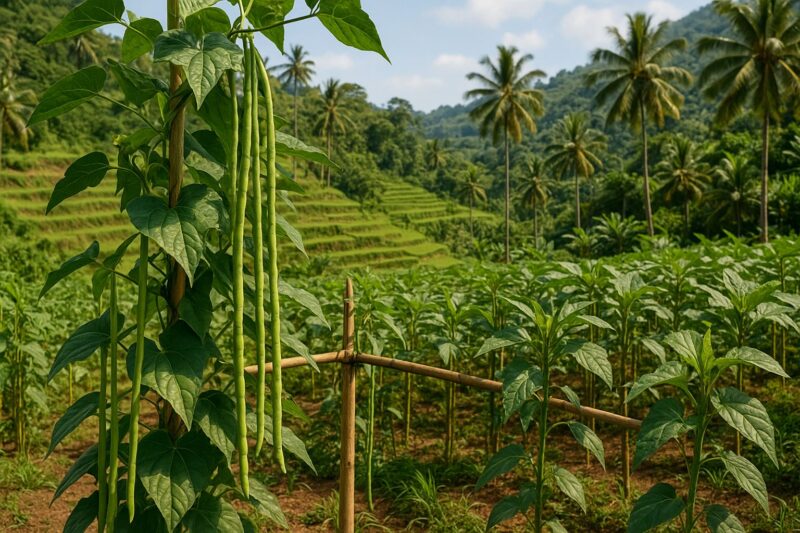Cucumber—pipino—is a cooling staple in many Filipino dishes, from fresh salads in Iloilo to the tangy, crunchy pickles that spice up merienda in Manila. Despite its delicate appearance, pipino can flourish under our tropical conditions if given the right combination of soil, support, water, and vigilance. Over multiple seasons in Bulacan—and with advice from gardeners in Laguna’s backyard patches and upland growers in Bukidnon—I’ve refined a process that consistently yields crisp, juicy cucumbers. Here’s what I’ve learned, quirks included.
Variety choice matters. Local slicing cucumbers produce long, mild-skinned fruits ideal for salads, while shorter pickling types excel when transformed into atsara or quick kimchi. In lowland heat—Bulacan, Pampanga, and Cavite—I tend toward heat-tolerant hybrids labeled “tropic sweet” or “summer crisp.” Upland gardens—Baguio, Bukidnon—welcome traditional varieties that set fruit in cooler nights. I plant both: long slicers for fresh eating and compact picklers in containers for fermenting experiments.
Soil preparation can’t be overlooked. Cucumber vines demand loose, fertile soil with excellent drainage. In clay-heavy plots, I incorporate two wheelbarrows of homemade compost per ten square meters, plus rice hull charcoal to improve aeration. Sandy coastal soils—common in Iloilo or Leyte—need added coconut coir or aged chicken manure to hold moisture. Aim for a pH between 6.0 and 6.8; if your soil skews acidic, a light application of agricultural lime will help.
Seedlings start indoors about four weeks before transplant. Sow seeds in trays or small pots under shade cloth, keeping the medium moist. Germination takes five to seven days at 25–30 °C. In Bulacan, I learned the hard way that young seedlings scorch quickly in direct sun, so I harden them off gradually—an hour of morning sun on day one, two hours on day two, and so on.
Transplant at the start of the wet season—June to July—spacing plants roughly sixty centimeters apart in rows ninety centimeters apart. This generous spacing lets vines spread or climb and ensures good airflow. Water in carefully, avoiding puddles, and mulch with rice straw to conserve moisture.
Support makes harvesting easier and reduces disease. I install simple trellises—bamboo frames or metal stakes with twine—so vines climb vertically. As shoots reach thirty centimeters, I gently guide tendrils onto the support. Vertical growth keeps fruits off the ground, where they can rot, and improves sun exposure for even ripening.
Feeding balances nutrients. At planting, I work compost into each hole and add a teaspoon of bone meal for phosphorus. When vines begin flowering—around six weeks later—I side-dress with decomposed chicken manure or an organic balanced fertilizer beyond the drip line. Overapplication of nitrogen can produce lush leaves but few fruits, so I monitor leaf-to-flower ratios closely.
Water management is crucial. Cucumbers need consistent moisture but detest standing water. I water deeply each morning—so roots get down to twenty centimeters—then allow the surface to dry by dusk. In containers, I water daily during dry spells, checking by feel: soil should clump slightly but not ball up. Mulch helps moderate soil temperature and evaporation.
Pests and diseases require vigilance. Aphids and whiteflies cluster beneath leaves; a gentle spritz of neem oil or a garlic-soap spray usually suffices. Powdery mildew appears as white patches on foliage; I nip affected leaves and, in mild cases, dust the canopy with rice flour. Cucumber beetles can chew fruits and spread wilt bacteria; I pick them off by hand during morning inspections and set shallow traps baited with fermenting fruit.
Harvest begins around fifty to sixty days after sowing. For slicing cucumbers, pick when fruits reach fifteen to twenty centimeters—still firm, with a slight sheen. Pickling cucumbers are best at eight to ten centimeters. Harvest every two to three days to encourage more flowers and keep vines productive into the late rainy season.
One season in Bulacan, after an unusually dry June, my vines wilted despite morning watering. I temporarily installed shade cloth overhead—an impromptu “greenhouse” of sorts—and resumed morning misting. Within a week, vines revitalized and yielded a late flush of tender fruits, reminding me that small interventions can save a crop.
Whether you train sprawling vines across open fields or tuck compact varieties into balcony pots, mastering soil health, seedling care, balanced feeding, moisture management, trellising, and simple pest defenses will bring you abundant pipino harvests across the Philippines. It may take patience—those thin-skinned fruits can feel fickle—but the reward of crisp, homegrown cucumbers is well worth the effort.
I’m open for consulting and speaking opportunities on sustainable vegetable production and agribusiness nationwide. Let’s grow together.
#Pipino #Cucumber #PhilippineFarming #SustainableAgriculture #UrbanGardening #ConsultingAvailable #SpeakingOpportunities




